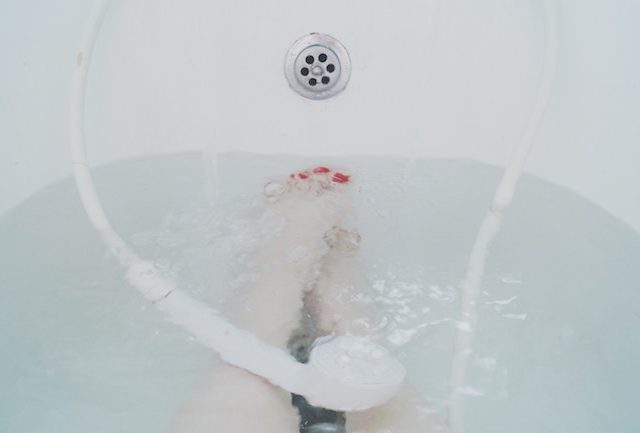Water Birth: What’s in the Water?!
Posted on:
May 17, 2018 | Doula, Labor & Birth

Moan and Tone. You know the sounds…the ones that tell you it’s a good time to get your client in the water for her water birth.
You get the lights dim. You call the nurse and you get the tub filled.
You flick on those battery operated tea lights your client so thoughtfully packed, pad the floor with towels, and lead her to the tub.
She sinks in slowly.
How does that feel? Better… (as you balance the temperature and wedge a rolled towel at the base of her neck).
She slips into relaxation before the next contraction builds. Let’s try the hand held shower too (you whisper).
You roll up your sleeves.
Using the shower head, you massage her back and shoulders. The rhythm and the sway of the water brings balance.
Contractions come in rolling waves and the shower becomes too much.
Better… (as you dip the cup in the water and gently pour it over her shoulders). She rolls to her knees. Holding her hips you lean in, and rock. Back and forth. The bathroom mirror steams with humidity and you take off your damp jacket. She rocks her hips. She brushes against your shirt. You’re soaked…
Ahhh, water birth.
And then you think…
What’s in this water?
Doulas – we know how magical the water is. We know that whether our clients are having a waterbirth or laboring in the water, it can bring a sense of control and calm. It comforts them and helps them continue when labor is tough.
What we seem to forget in all that magic, are all of the other fluids in the water…
But then, in the dim light you see it…
- Flecks of discharge.
- Bits of bloody show.
- Strings of mucus plug.
Magnified by your mind…
- Sweat.
- Trickles of urine.
Her bag of waters is still intact… but eventually… amniotic fluid.
And when she pushes… Most likely poop.
Now, I’m not saying that water birth or labor and birth on dry land is “gross.” These fluids are a normal part of the process.
In all other circumstances we comfortably and confidently glove up – holding a leg, wiping fluids, applying a warm compress to the perineum, changing pads and bedding, etc.
Somehow we forget that water birth isn’t washing anything away. Instead, we’re bathing in the fluids of our client’s labor and birth.
Here are a few extra things that you can do to prepare to support your client in the water.
- Plan and dedicate a labor doula wardrobe. Choose clothes that are comfortable. You want something that isn’t going to be difficult to work in, dries quickly after laundering (for those back to back births) and isn’t transparent if it gets wet. Pick shoes that have a good rubber sole so you don’t slip on the wet floor.
- Pack an extra change of clothes. This goes without saying, no matter what your client is planning for their birth. Don’t forget to include extra shoes and socks. There’s nothing worse than cold wet feet.
Always keep a packed bag with two sets of clothes in your car or another bag that you carry regularly, just in case you’re called to a client and you don’t have time to go change before meeting them in person.
- Glove up. Shortly after I arrive in my client’s birth room, I make it a point to notice where the gloves are and make sure I have them handy (no pun intended). Ask the nurse if she can bring some elbow and / or shoulder length gloves to the room (if they aren’t readily available). The shoulder length gloves are my favorite when working with the tub. Even though you’re not usually shoulder deep with your client, they do help keep the water out of the inside of the gloves.
- Take a break, and get cleaned up. Once your client is settled in after getting out of the water take a few minutes to wash up and care for yourself. Change into dry shoes and clothes if needed. When you get home, enjoy a nice hot shower or soak with your favorite bath bomb ; and toss that wardrobe…shoes and all…in the washing machine.
Remember, working with a person in labor isn’t sterile, but taking Universal Precautions is still important. It protects you and your client. It also shows the medical professionals around you that you are well-trained, and take your job seriously. Ultimately elevating the role of the Labor Doula profession.
Katie Brenner is co-owner of Doulas of Cincinnati , and a ProDoula Labor and Postpartum & Infant Care Doula Trainer.
